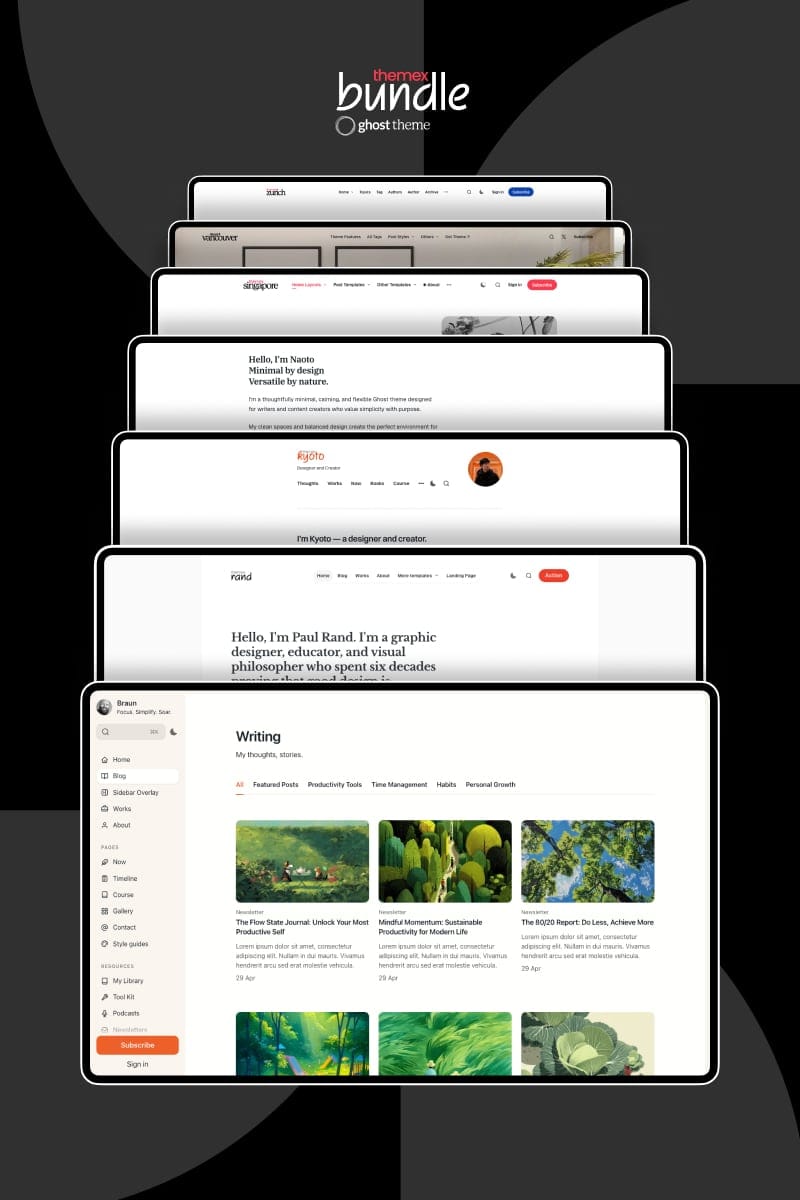Zurich Docs
Introduction
Since this is a Ghost theme documentation, you are assumed to have a basic knowledge of the Ghost app.
If you're starting out with Ghost, it is best to see the guides in the official Ghost Help Center – check this out, and you'll have all the available information.
Getting started
Install theme
Upload zip file
To begin, unzip the downloaded package by double-clicking it on a Mac or by right-clicking and selecting "Extract All" on Windows.
Inside the new zurich folder, you will find the zurich.zip theme file and an online documentation file.
Step-to-Step to upload the theme to your website
- Log in to your Ghost website admin (example.com/ghost).
- Click the settings icon ( ⚙️ ) at the bottom of the left-hand side.
- Go to Design > Change theme.
- Click Upload theme and select the zurich.zip theme file.
- Once uploaded, click Activate now to activate Zurich.
Upload routes.yaml (Required)
The routes.yaml is required for the following reasons:
- Authors page
- Archive page
Step-to-Step to upload the file:
- Unzip the zurich.zip theme file.
- In your Ghost admin, click the settings icon ( ⚙️ ) at the bottom of the left-hand side.
- Go to the Labs.
- Scroll down to the Routes section and click the Upload routes YAML button.
- Select and upload the
routes.yamlfile inside the theme folder.

Pages
Homepage
[Watch this video for homepage setup]
The homepage will show a list of content sections.
- Hero section with custom title and description
- Subscription box
- Featured posts, if they exist
- All posts with pagination
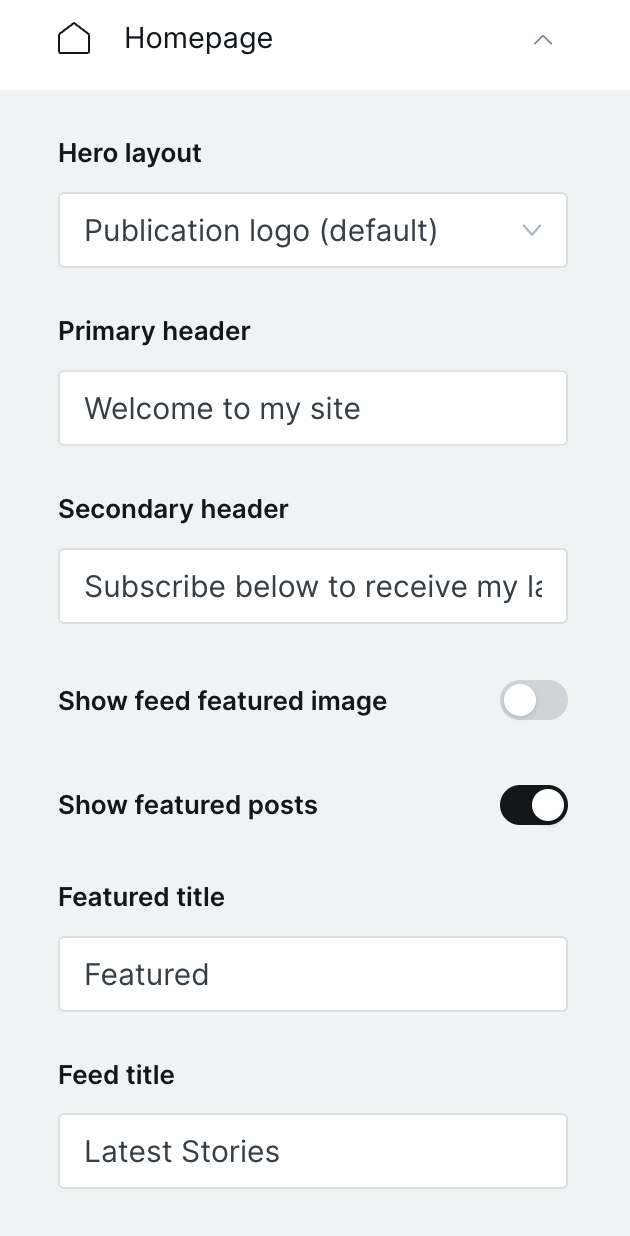
Hero section
Zurich supports customizing the text visibility of the cover image in your publication hero section. You have three settings to choose from
- Hero layout: With or without publication cover
- Primary header: Big main title for your publication
- Secondary header: Smaller text description under the big title.
Step-to-Step to customize the hero section text
- Go to Settings > Design from the admin menu
- Click Homepage in the Site design settings sidebar on the left
- Select layout in Hero layout: Publication lofo (default) or no logo.
- Enter your text in text inputs inside Primary header or Secondary header menu items
If you want to style your hero text (e.g. bold, italic, break a line,…) check hero section customize.
Featured posts
By default, Zurich shows two featured posts. The theme supports showing/hiding featured posts and customizing the featured post section title.
To customize it, go to your Ghost admin Settings > Design > Site design > Homepage
You will find two settings
- Show featured posts: Default value is on — show featured post. If you don't want to show the, turn it off.
- Featured title: Default is Featured. You can change to any text you want.
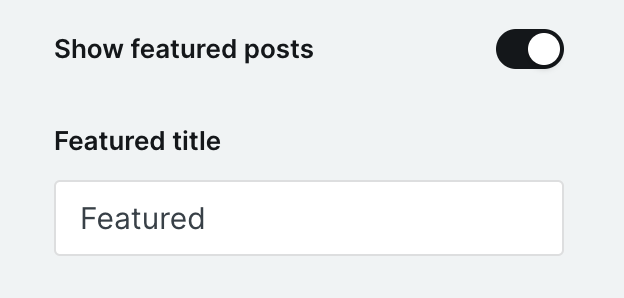
List of posts
Zurich supports customizing the latest post section title.
To change the text, go to your Ghost admin Settings > Design > Site design > Homepage. Then, change input Feed title to any text you want.
Zurich doesn't support customizing the number of posts per page (default is) on the Ghost admin interface. Because of the constraints on the grid layout — the layout is only good with a fixed number of posts.
But if you really want to change the number of posts per page, follow [posts per page guide] and edit the package.json file to change it.
Postcard style
Zurich supports customizing post card style. You have two options to choose from:
- No cover image (default): minimal post card style with only text. For text lovers.
- With cover image: Cover image as background for each post card. This is for people who want a more visual differentiation for each post.
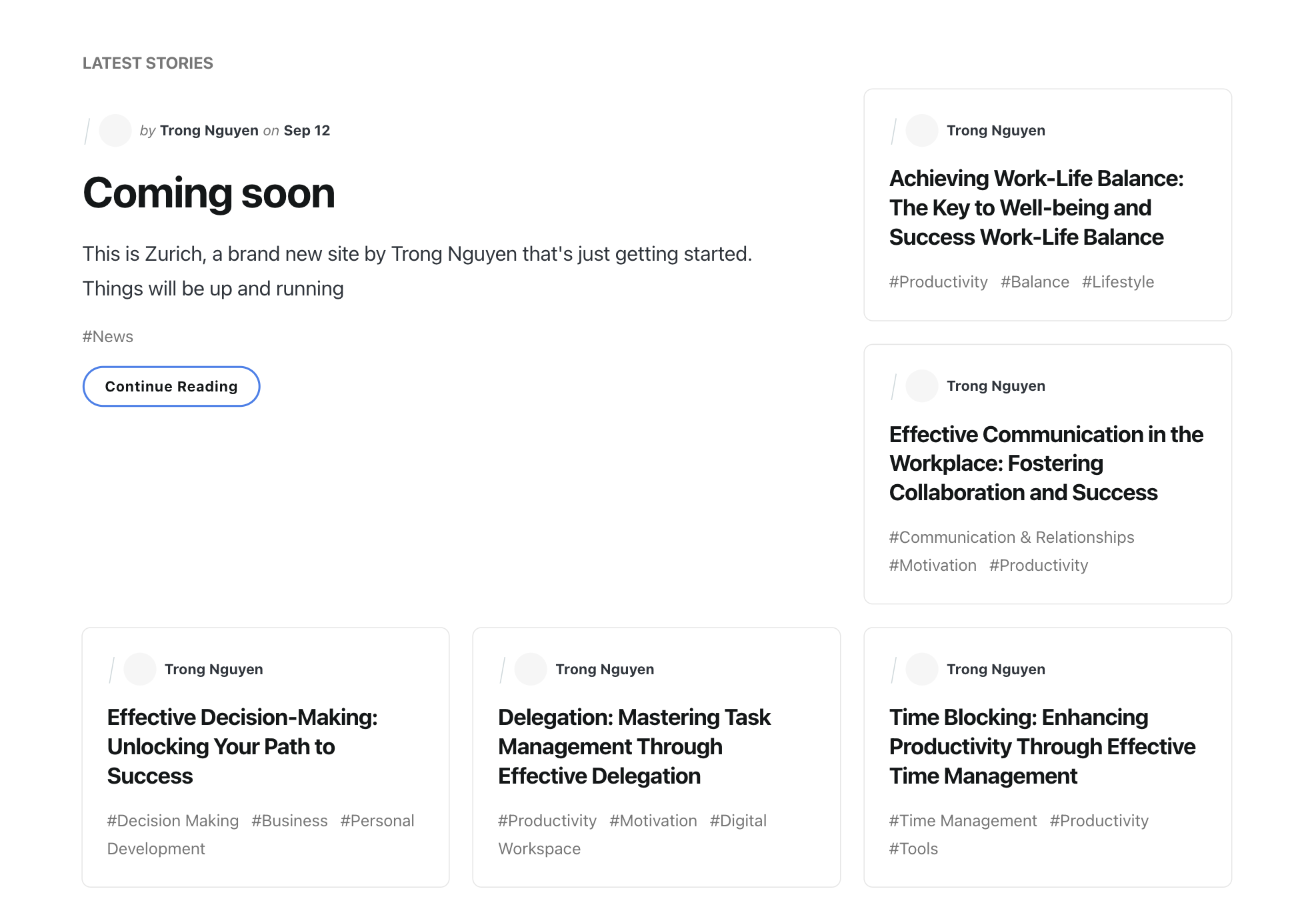
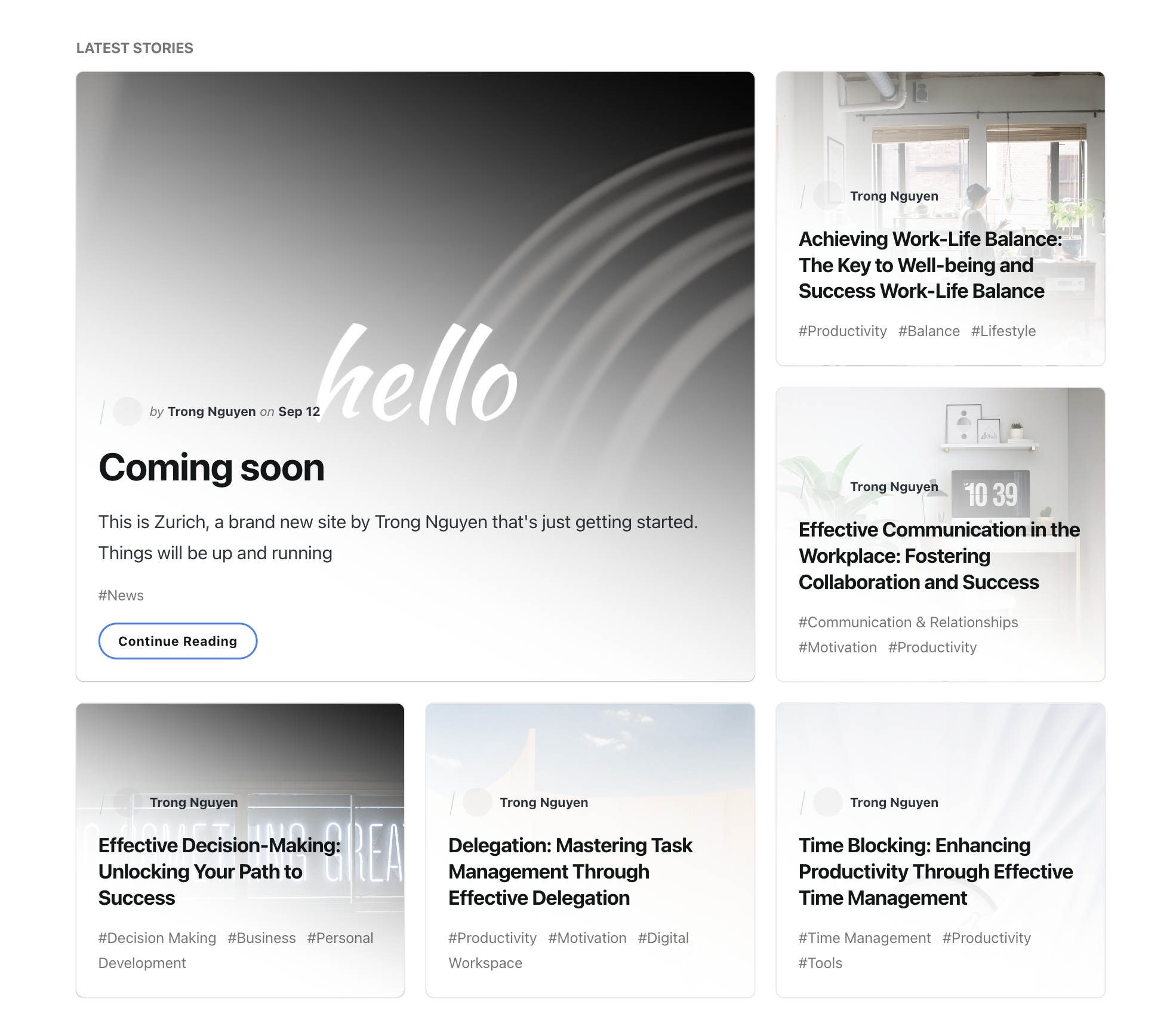
Post page
Zurich theme has 4 post page templates to choose from:
- Default
- Full Featured Image
- Wide Featured Image
- No Featured Image

These templates differ from each other by the size of the featured image.
To choose which template to use when you publish a post:
- On the post editor page, click the icon in the top right corner to open the Post settings
- Then, find the Template selector and choose the style you want for your post.
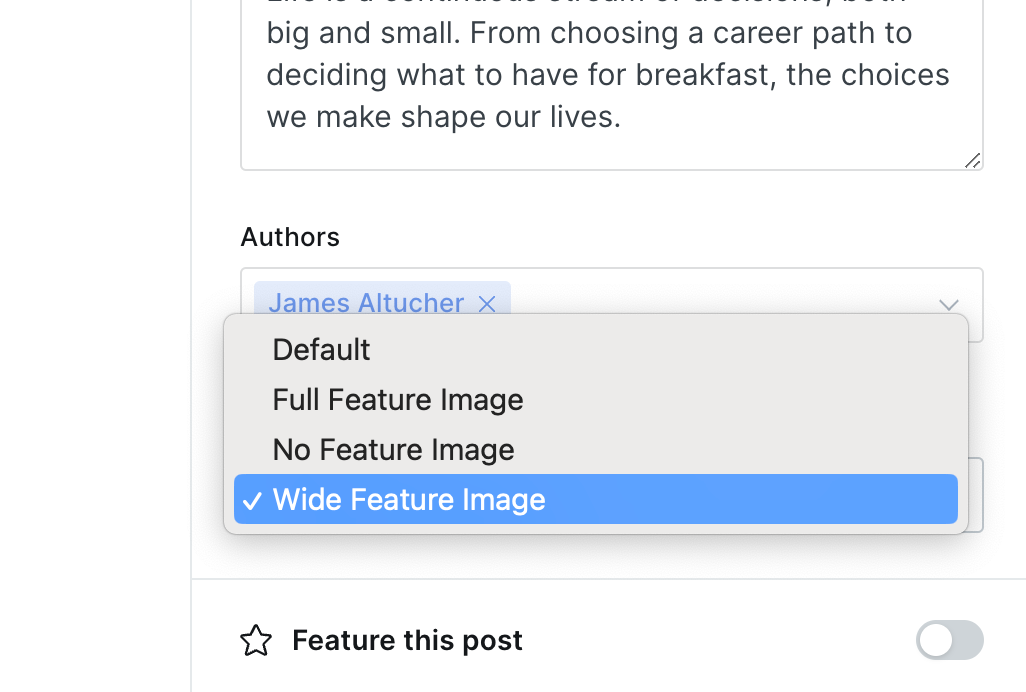
You might want to change some other settings for the post page:
- Change-related post card layout
- Change the copy for the subscription box
- Show/Hide comment section for your subscription
Authors page
You can add a custom authors page to show all authors from your publication.
Zurich has a template for the Authors page, which shows all authors of your publication. The authors' page is not required, but you can add it.
Make sure to Upload the routes.yaml file.
Steo-to-Step to create the Authors page:
- Go to Pages from the admin menu
- Click the New page button in the top right corner
- Add a title (e.g. 'Authors').
- Add a description for this page (if you want to)
- Click the icon in the top right corner to open the Page settings
- Ensure that the Page URL is
authors - Click Publish
- Now you have an authors page with the URL
yourblog.com/authors
Tags page
Or you can call it a category page that shows your top written tags.
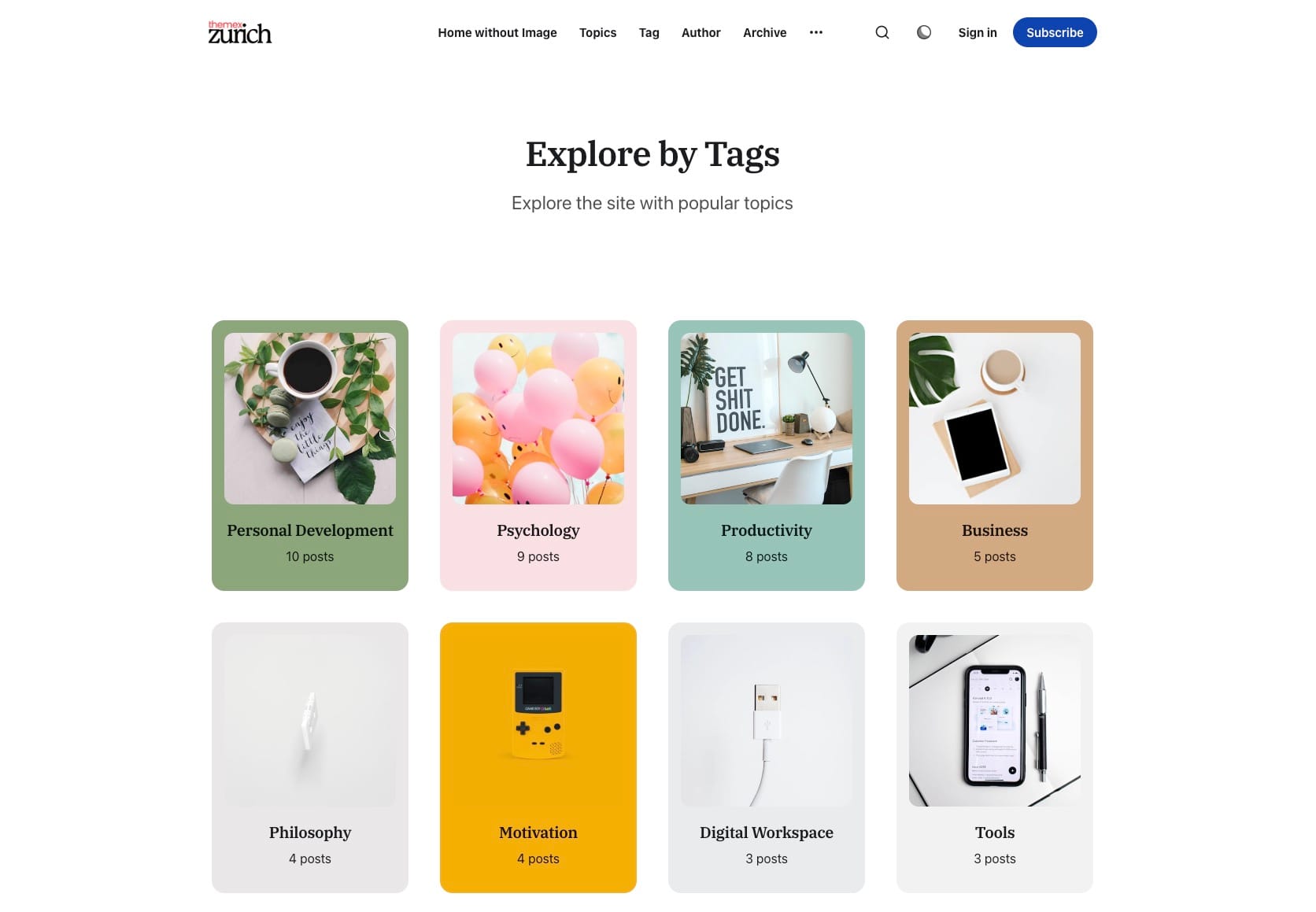
The page shows the top 8 tags, sorted by the number of posts.
Make sure to Upload the routes.yaml file.
Step-to-Step:
- Go to Pages from the admin menu
- Click the New page button in the top right corner
- Add a title (e.g. 'Tags').
- Add a description and featured image for this page (if you want to)
- Click the icon in the top right corner to open the Page settings
- Ensure that the Page URL is
tags - Click Publish
- Now you have an tags page with the URL
yourblog.com/tags
To add background color for each tag, from Ghost admin, go to the tag detail and select Accent color for that tag.
Tag page
Zurich has a page for the tag page showing all posts belonging to that tag and a list of other tags (sorted by the number of posts of each tag) of your publication.
Try to add a featured image for each tag, you will see a nice tag list.
Archive page
Zurich provides a neat Archive page to list all the posts, grouped by year and month.
You can add a custom Archive page to show an archive from your publication. The Archive page is not required, but you can add it.
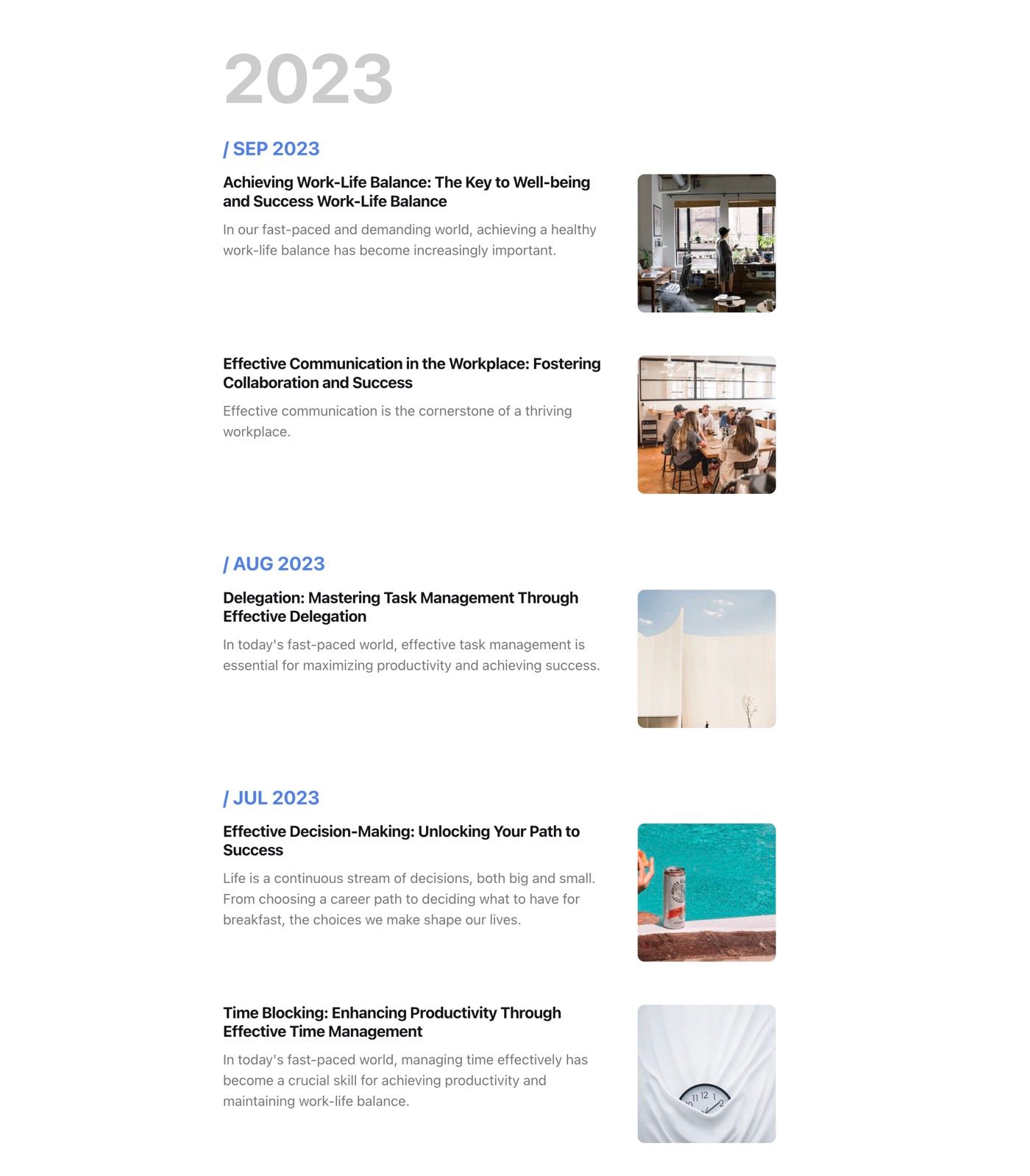
Step-to-Step to create the Archive page:
- Go to Pages from the admin menu
- Click the New page button in the top right corner
- Add a title (e.g. 'Archive').
- Add a description for this page (if you want to)
- Click the icon in the top right corner to open the Page settings
- Ensure that the Page URL is
archive - Click Publish
- Now you have an archive page with the URL
yourblog.com/archive
Contact page
If you wish to have a direct way in which your readers can contact you, you can add a contact page based on Formspree
Step-by-Step
- Create a new Page and give it a title, like "Contact".
- Add your content and the contact form code using [Formspree] as a service. Please check the code example below.
- Click Publish to publish the page.
- To add the page to the navigation, please check the Navigation section.
<form action="https://formspree.io/f/{your_form_id}" method="POST">
<input type="text" name="name">
<input type="email" name="_replyto">
<textarea name='message'> </textarea>
<input type="submit" class="button button-primary" value="Send">
</form>
Check out How to Add a Contact Form to Your Ghost Blog for more information.
Custom settings
Colors
Zurich supports changing the Accent color and background color for your website.
Set Accent color
Accent color is the primary one used in your publication theme. Zurich uses the Accent color throughout the theme in buttons, social sharing hover,…
You can change the theme Accent color from the Ghost admin.
Change the Accent color from the admin Settings > Design > Brand > Accent color.
Change the background color
If you don't like the default pure white background, you can change to a different background color.
You can choose any background color you want, Zurich will auto-calculate the color contrast and set the text color to keep it readable.
Here are some examples of background colors for your inspiration.
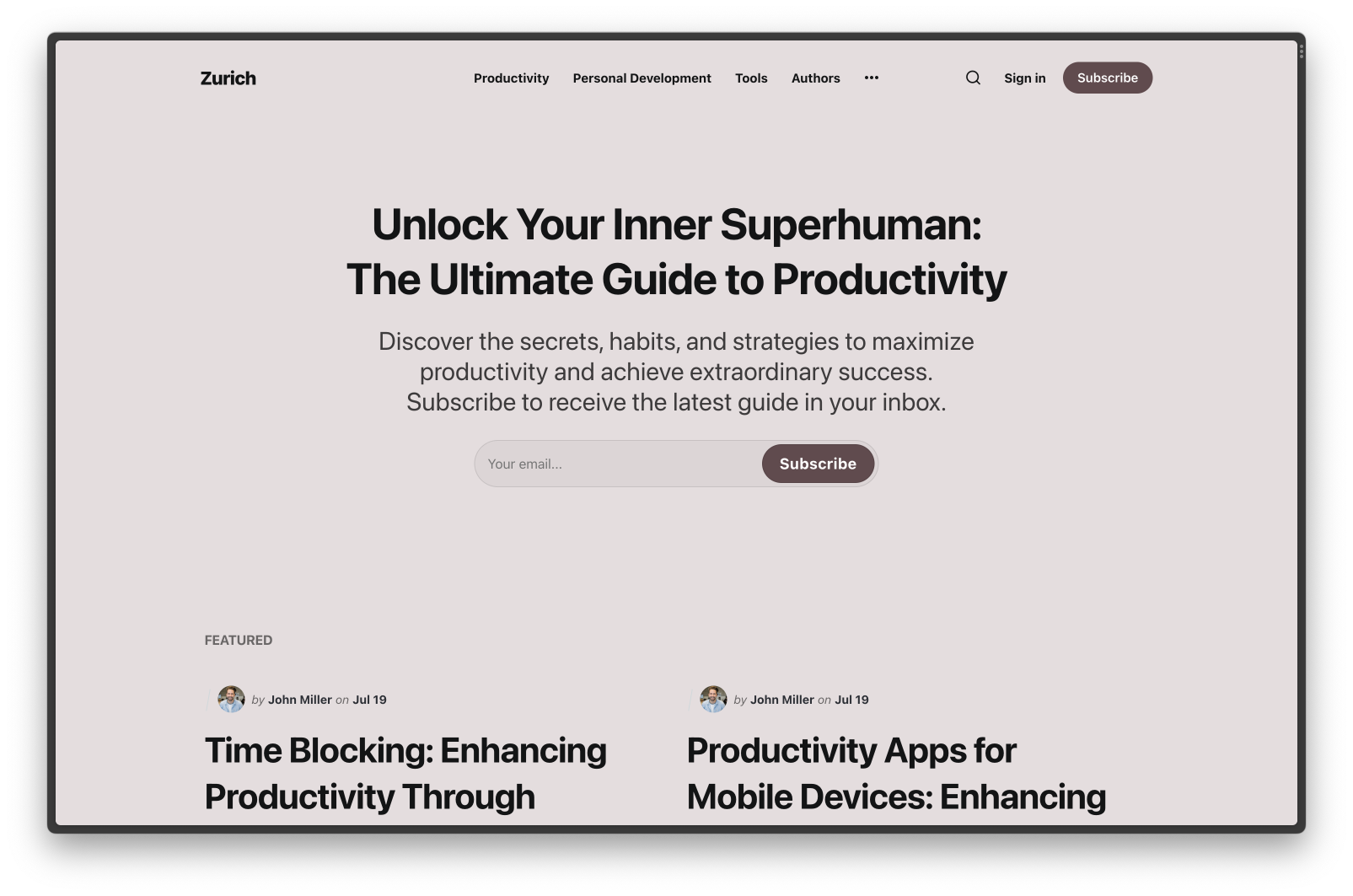
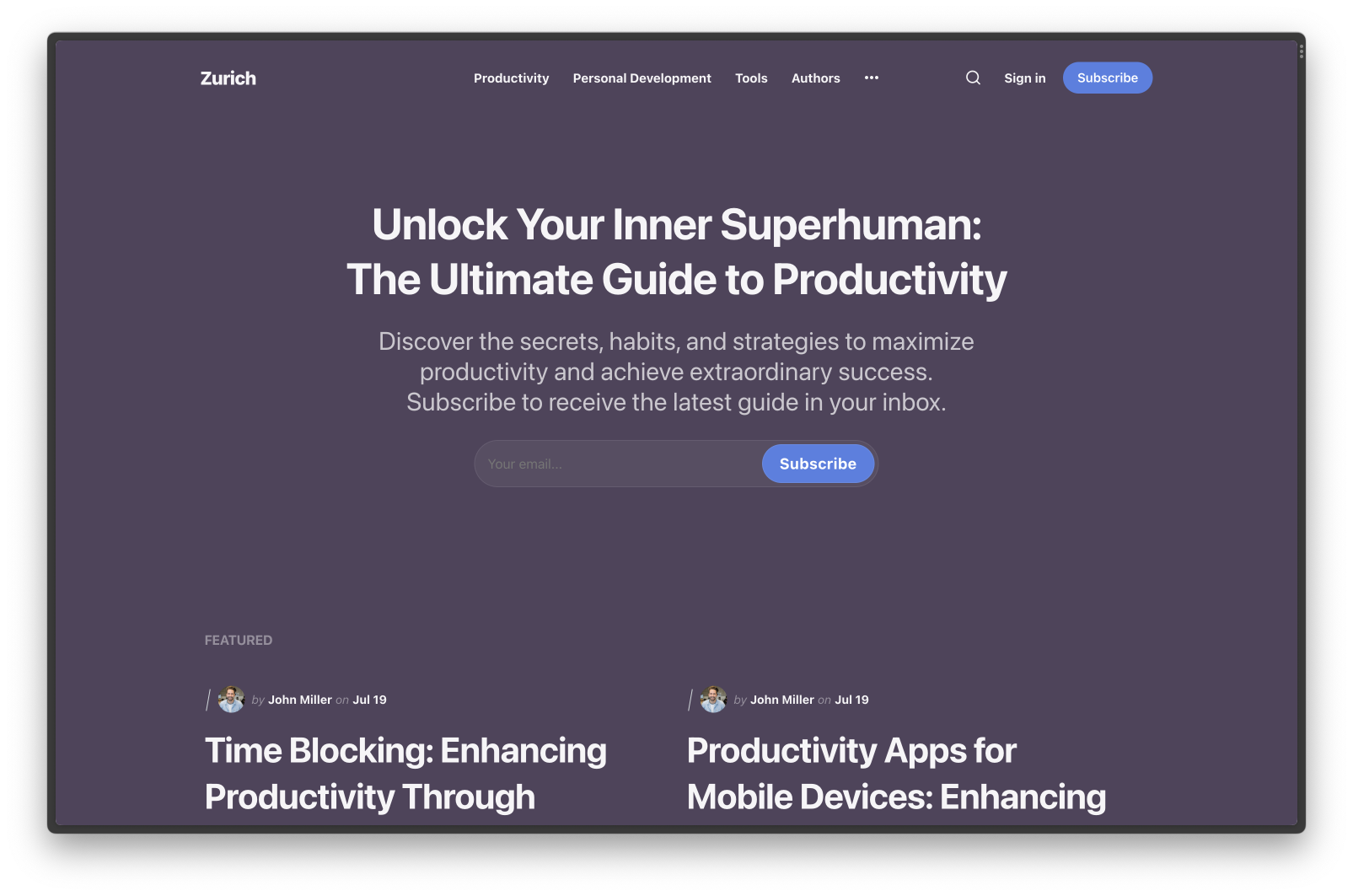
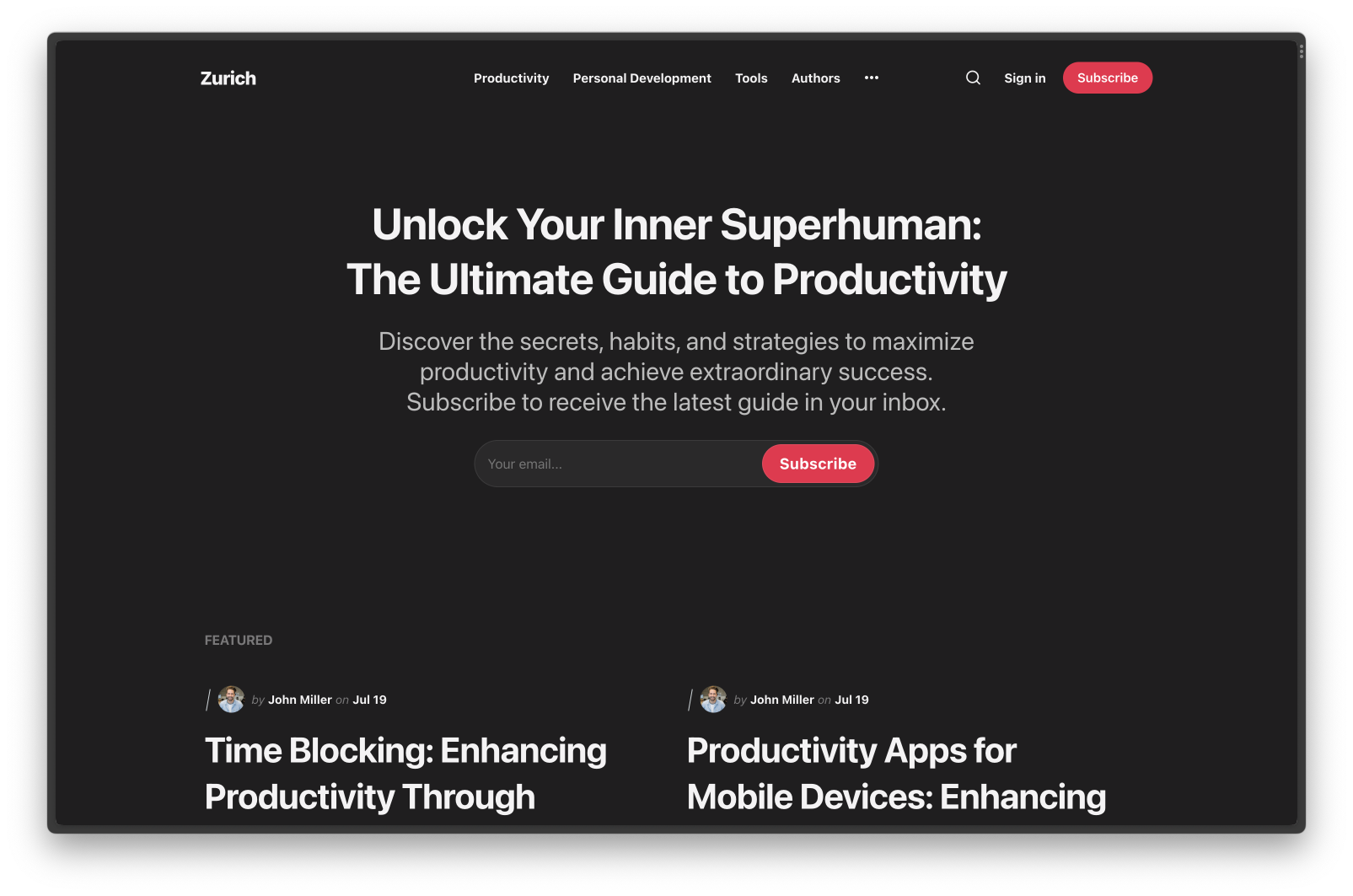
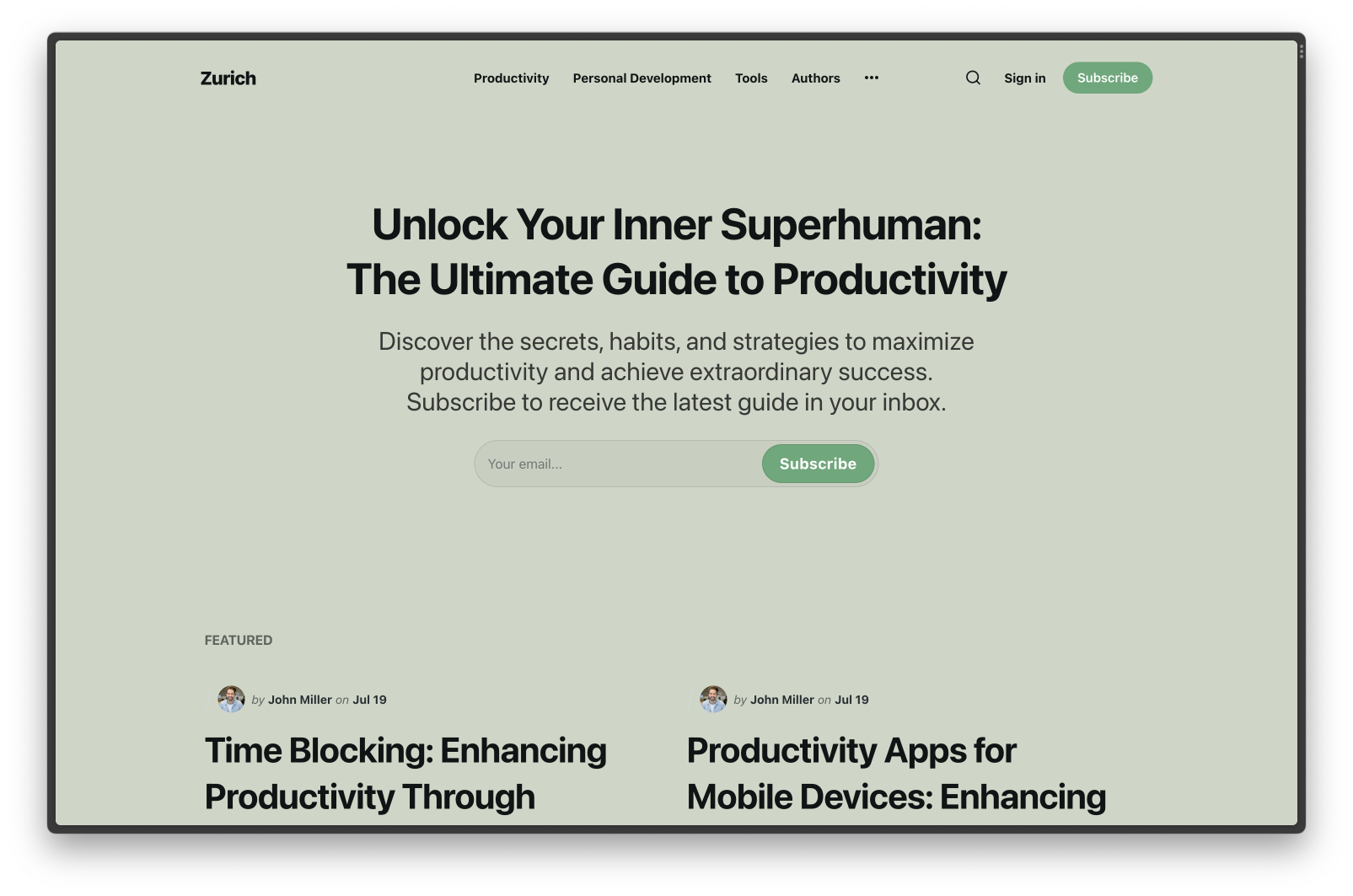
The following websites and resources will be useful if you need inspiration with color. But make sure you choose an accessible color. This is important for readers.
Light and Dark mode
Zurich will change the color palette based on the background color; you can choose your own theme, light or dark.
Zurich doesn't support light/dark theme switching to keep the theme simple and usable.
Typography
Depending on the selected ones, this setting will change the heading and body text fonts.
Default font-pairing
Zurich has 2 variants of font-pairing
- Modern sans-serif (Default): Zurich uses system fonts which will adapt based on the OS
- Elegant serif: Zurich uses
Merriweatheras the default font for elegant style.
Steo-to-Step to customize
- Go to Settings > Design from the admin menu
- Click Site-wide in the Site design settings sidebar on the left
- Choose font for title/heading by clicking on Title font
- Choose a font for the body by clicking on Body font

Change to any fonts
You can change any font from the Ghost admin interface with Code Injection and Google Fonts.
For example, if you want to use "Inter" and "EB Garamond" fonts from Google Fonts, your code in Code Injection will be like this:
<link href="https://fonts.googleapis.com/css2?family=EB+Garamond:wght@500&family=Inter:wght@400;700&display=swap" rel="stylesheet">
<style>
:root {
--font-base: 'Roboto', sans-serif;
--font-serif: 'EB Garamond', serif;
}
</style>
You can also [use your custom font] by including it on your theme with a code editor. This technique is more advanced, but you can add 'your own' fonts :D
Logos
You can use an image as a logo instead of the site name.
Steo-to-Step To upload publication logo:
- Go to Settings > Design from the admin menu
- Click Brand in the Site design settings sidebar on the left
- Click Upload logo button in the Publication logo menu item
If you want to change the logo size, use the following code in Code Injection.
<style>
.gh-head-logo img {
max-height: 40px;
}
</style>
The default value is 40px, so you can increase this value to match your preference.
Navigation
You can add, edit, change the layout, and reorder the navigation in Ghost Admin.
Header layout
Zurich supports 2 types of header layouts.
- Logo on the left
- Logo in the middle.
Step-to-Step to customize
- Go to Settings > Design from the admin menu
- Click Site-wide in the Site design settings sidebar on the left
- Click Navigation Layout and select your preferred setting
Header nav items
The navigation items will be auto-adjusted based on the width of the browser and the length of items, so you can add as many items as you want.
If the navigation items reach the max width, they will be put inside a popover that appears when clicking on the ( … ) icon.

Step-to-Step to add a static page or a link to header navigation:
- Go to Settings > Navigation > Primary Navigation
- Type the page's name in the label field as you'd like it to appear on your menu.
- Click on the item's URL. The blog URL will already be auto-populated. Add the page slug after the final /. When satisfied with your page configurations, click the Save button.
Navigation Dropdown Menus
You can create dropdown submenus in your Ghost navigation to organize your content more effectively and improve site navigation. This feature helps visitors quickly find specific pages under broader categories.

Creating Dropdown Submenus
Follow these steps to set up dropdown navigation menus:
- In your Ghost Admin panel, go to Settings → Navigation
- Add your main menu items normally
- To create submenu items, add them with a dash (-) prefix before the child item
- Arrange items in the order you want them to appear

Footer
Like the header, you can add the footer navigation links from the Ghost Admin Settings > Navigation > Secondary Navigation
Social Media Icons
Ghost supports adding Facebook and Twitter profile URLs from the admin panel. Go to Settings > General > Social accounts and add your URLs, and the theme will automatically add them in the footer.
Zurich doesn't support adding additional social links yet.
Hero section
The hero section includes a title, description, and subscription form at the top of the homepage.
How to add your own hero title?
If you want your text in bold, use the <span> ... </span> tag, like this:
Your own <span>hero text</span>
You can also use <b> or <strong> with the same visual result.
If you want to start the text on a new line use the <br> tag, like this:
Your own hero text<br> New text line
Table of content
You can add a table of contents (TOC) to any post. Simply add this HTML code to your post.
<aside class="toc-container">
<div class="toc-sidebar">
<h4>On this page</h4>
<div class="toc"></div>
</div>
</aside>
Step-by-Step
- Create a new post and write your post
- Right under the title, add an HTML card
- Insert the code above. You might want to change the TOC's header text (
h4). Maybe you want to change toTable of Content - Publish and review it.
Related post card style
You can easily change the style of the related post cards in your post page.
Zurich supports 4 types of related post cards.
- Expanded
- Right thumbnail
- Text only
- Minimal
Step-by-Step
- Go to Settings > Design in the Ghost Admin
- Go to Post option and expand the setting lists. Then go to the Related post
- Use the dropdown to select the option
- Click Save to activate
Footnotes
Footnotes serve as essential tools in academic and professional writing, providing valuable supplementary information without disrupting the main text.
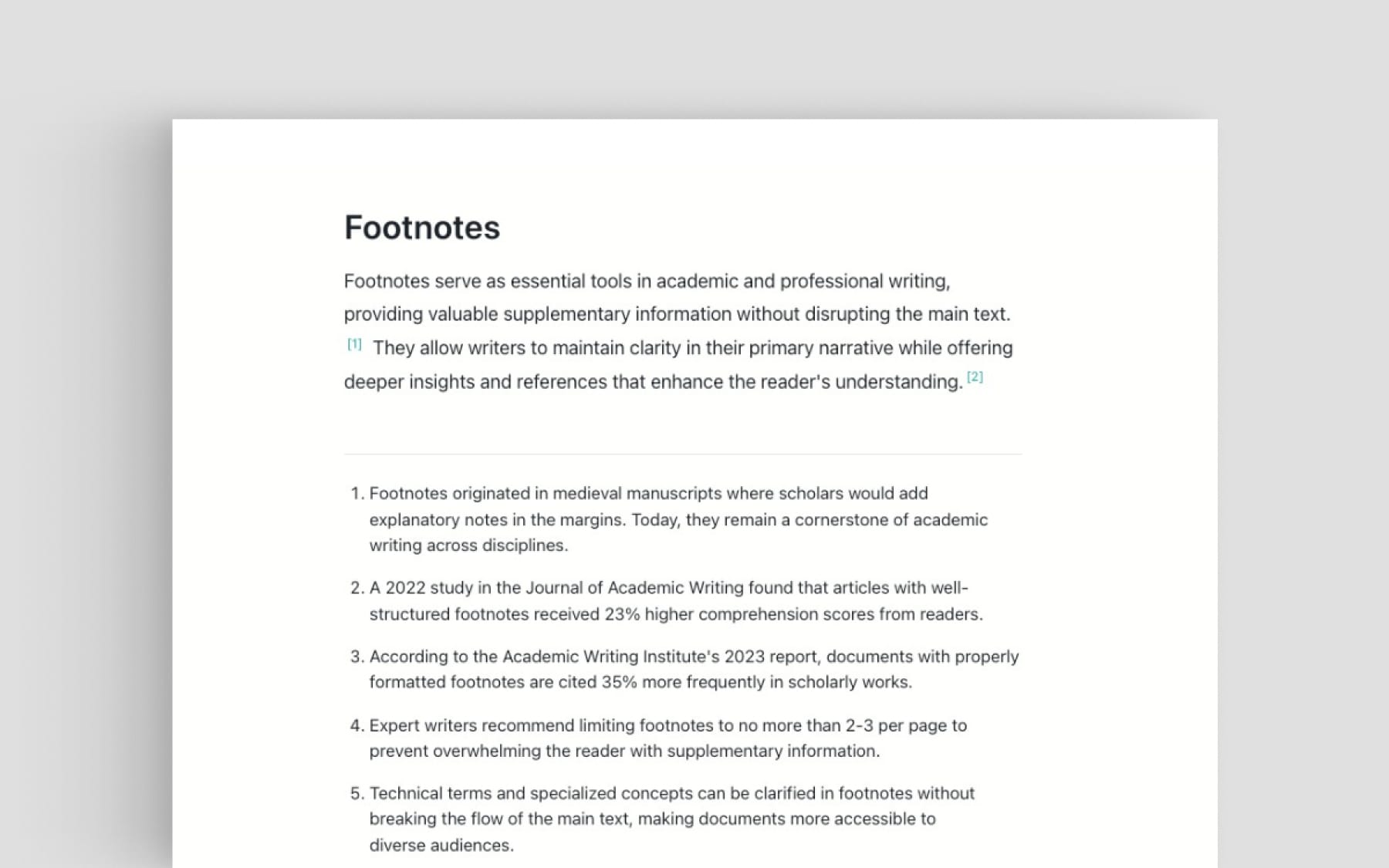
In the Ghost admin > Post/Page, you can add footnotes by placing your footnote marker using this format:
This is your main text[^ Your footnote content goes here]
Add as many footnotes as needed throughout your content. For example:
Ghost websites benefit from clear documentation[^ According to usage studies, well-documented websites see 47% higher user engagement]. This is especially true for specialized themes[^ Kyoto and Braun themes consistently rank in the top 10 for user satisfaction].
Save and preview your post to verify the footnotes appear correctly.
- The markers should convert to numbered superscript links
- Clicking a link should scroll to the corresponding footnote
- Footnotes should appear in an ordered list at the bottom of your post
Posts per page
By default, the homepage, author's, and tag's page display a maximum of 18 posts per page, but you can change this number.
Step-by-Step
- You'll need to open the theme's
package.jsonfile in your code editor and find:
"config": {
...
"posts_per_page": 18
...
}
- Change the value of the
18to the expected value. - Save your
package.jsonfile in root folder.
Google Analytics
To integrate Google Analytics, I recommend using the Google Analytics integration by Ghost.
Syntax Highlighting
You can add a fenced code block by placing triple backticks ``` before and after the code block. For example:
pre {
background-color: #f4f4f4;
max-width: 100%;
overflow: auto;
}
This will produce the following gray look:

To highlight a code block, add a language alias like css or js to the code block. For example, the CSS code in the previous example will wrap between "css and ``` ` as follows:
pre {
background-color: #f4f4f4;
max-width: 100%;
overflow: auto;
}
This will produce the following colored look:

To add inline code, wrap the text between two backticks " ".
Prism
The theme ships with Prism.js, a lightweight, robust, and elegant syntax highlighter.
The initial Prism package includes some languages, like Markup, CSS, C-like, and JavaScript.
You can add support for more languages by adding the Prism autoloader script, which will automatically load the languages you need. To do this, add the following script to the website admin Code Injection (Site Footer).
<script src="https://cdnjs.cloudflare.com/ajax/libs/prism/1.28.0/plugins/autoloader/prism-autoloader.min.js" integrity="sha512-fTl/qcO1VgvKtOMApX2PdZzkziyr2stM65GYPLGuYMnuMm1z2JLJG6XVU7C/mR+E7xBUqCivykuhlzfqxXBXbg==" crossorigin="anonymous" referrerpolicy="no-referrer"></script>
Click Save.
Responsive tables
The responsive table will display a horizontal scroll bar if the screen is too small to display the full content. The following description applies to the table added using the markdown card.
By default, the table adapts to the window width. If you have a too wide table, it will display a horizontal scroll bar when needed.
Step-by-Step
- To add a responsive table, use the Markdown card.
- Add the markdown to create a table. To generate a table, you can use the tool Markdown Tables Generator. Below is an example
| # | Heading | Heading | Heading | Heading | Heading |
|:--|:--------|:--------|:--------|:--------|:--------|
| 1 | Cell | Cell | Cell | Cell | Cell |
| 2 | Cell | Cell | Cell | Cell | Cell |
| 3 | Cell | Cell | Cell | Cell | Cell |
Subscription form
Subscription is placed at the bottom of the post page.
Change subscription form text
You can change the subscription box's title and description text from the Ghost Admin.
Step-to-Step
- Go to Settings > Designs in Ghost Admin
- Expand Post section, add your title in Email signup text input and description in Email signup desc
- Finally, click Save.
Ghost inbuilt Signup card
Zurich supports the newest component Signup form from Ghost. For more information, check out Ghost Signup Card


Inline subscription box
Besides Ghost inbuilt Signup form, you can use the Zurich inline subscription form. It looks like this
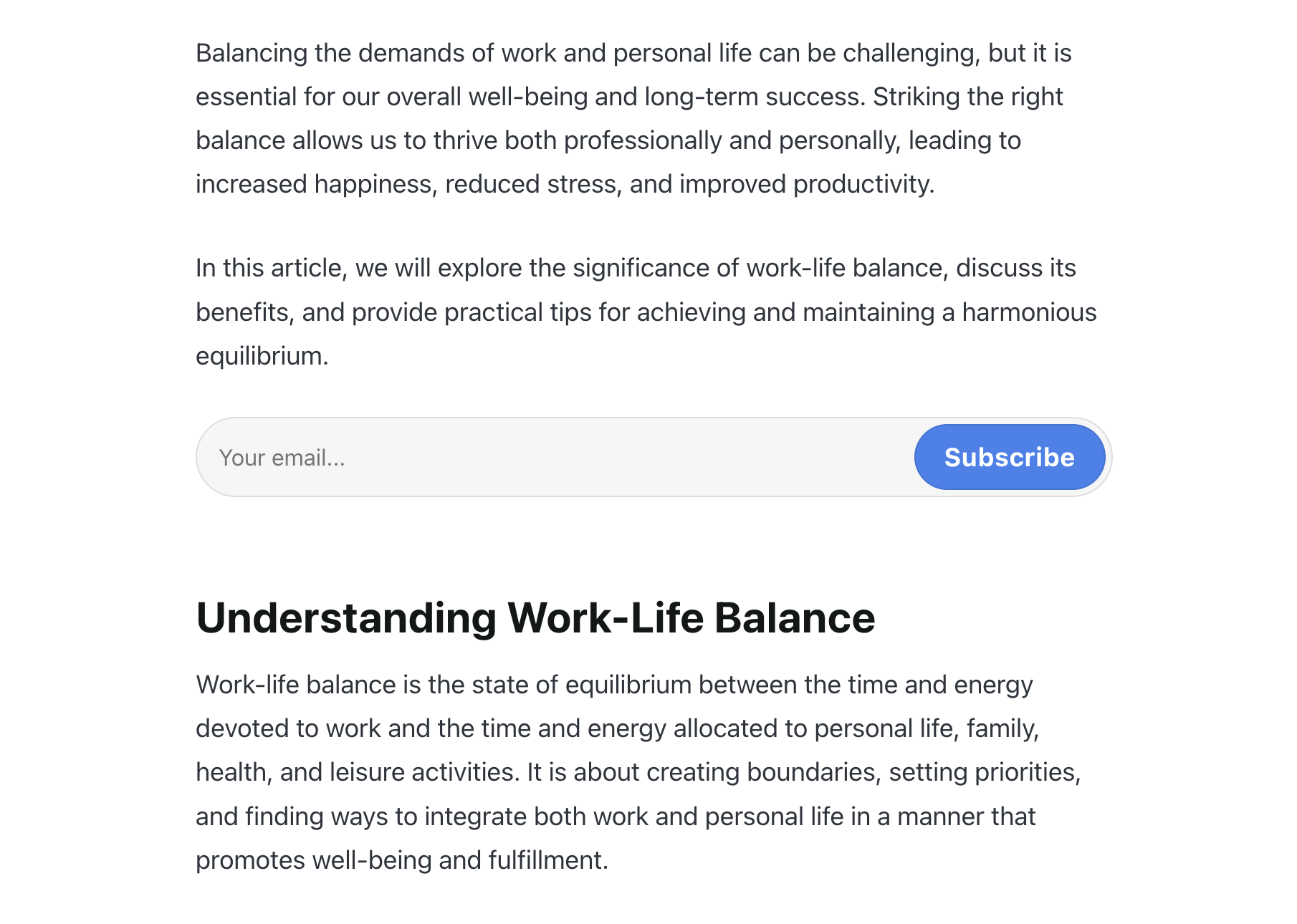

You can add an inline subscription box in any place in your post with this code.
Step-to-Step
- Create any post as usual
- At the line you want to add the form, click + icon or type
/, and select HTML option - Paste the code below. (Note: the form comes with a spinner animation, so it's a bit complicated.)
- Preview and publish the post
<form class="form-wrapper cover-form inline-form" data-members-form="">
<input class="auth-email" type="email" data-members-email="" placeholder="Your email..." required="true" autocomplete="false">
<button class="button button-primary form-button" type="submit" aria-label="Submit">
<span class="default">Subscribe</span>
<span class="loader">
<svg class="icon" xmlns="http://www.w3.org/2000/svg" viewBox="0 0 40 40">
<path opacity="0.3" fill="currentColor"
d="M20.201,5.169c-8.254,0-14.946,6.692-14.946,14.946c0,8.255,6.692,14.946,14.946,14.946 s14.946-6.691,14.946-14.946C35.146,11.861,28.455,5.169,20.201,5.169z M20.201,31.749c-6.425,0-11.634-5.208-11.634-11.634 c0-6.425,5.209-11.634,11.634-11.634c6.425,0,11.633,5.209,11.633,11.634C31.834,26.541,26.626,31.749,20.201,31.749z">
</path>
<path fill= "currentColor"
d="M26.013,10.047l1.654-2.866c-2.198-1.272-4.743-2.012-7.466-2.012h0v3.312h0 C22.32,8.481,24.301,9.057,26.013,10.047z">
<animateTransform attributeType="xml" attributeName="transform" type="rotate" from="0 20 20"
to="360 20 20" dur="0.5s" repeatCount="indefinite">
</animateTransform>
</path>
</svg>
</span>
<span class="success">Email sent</span>
</button>
</form>
Comment / Member discussion
Zurich comes with Ghost Native Comments integration. You can turn the comments on from your Ghost admin Settings > Membership > Commenting.
Languages
Zurich is fully translatable by enabling a publication language in the settings of the Ghost Admin. Before that, you must prepare your language file.
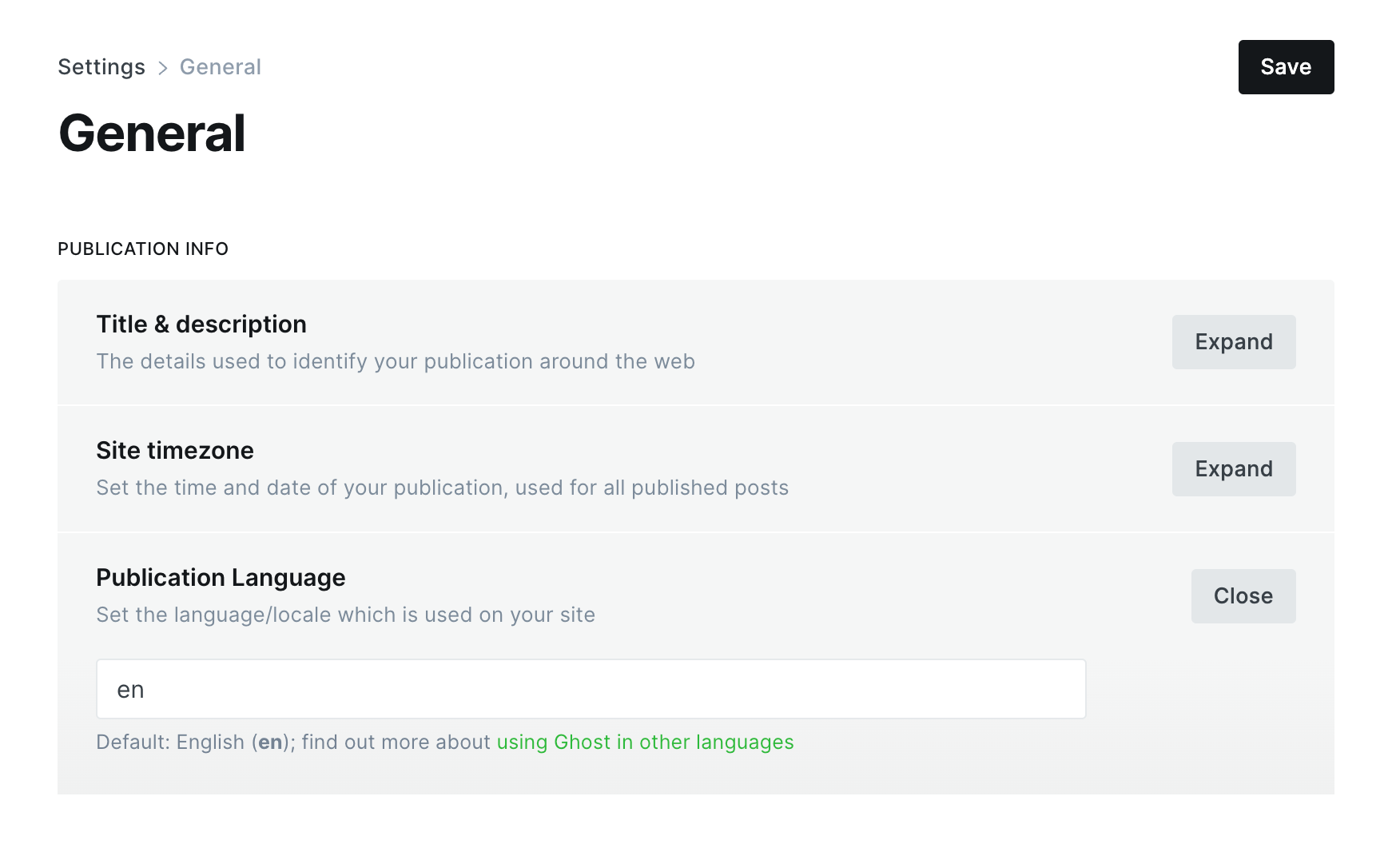
Step-by-Step

- Inside the
../locales/folder, add target language files for each translatable language used on your site. For example,fr.jsonis for French andpl.jsonis for Polish. A valid language code must be used. - Translate the sentences used in the theme inside your new language files, for example, in
en.json:
{
"Subscribe": "Subscribe",
"Sign in ": "Sign in",
"Account": "Account",
...
}
- And edited to translate into Spanish for
fr.json:
{
"Subscribe": "S'abonner",
"Sign in ": "Se connecter",
"Account": "Compte",
...
}
- Upload a theme with a new language file.
- Go to the General settings in the Ghost Admin.
- At the top of the page, you'll see the Publication info section
- Enter the correct language code into your Publication language settings menu.
- Finally, click Save to activate.
If you edited the active language, you have to restart Ghost to make the changes effective. Alternatively, enter another language code and click Save to activate, then switch back to your language code.
Advanced setting
Editing a theme's code
You will encounter information about editing theme files in many places in this documentation.
To edit files, you will need to unzip the theme archive – at this point, you will have access to the necessary files indicated in the theme documentation.
Step-by-Step
- To edit your theme files, download a copy of the theme. For this purpose, go to the Design settings in the Ghost Admin and click Change theme in the bottom left corner.
- Use the Advanced dropdown menu in the upper right corner to download your theme, then unzip the theme locally.
- Once the theme is unzipped, the files can be edited using a code editor – make the changes indicated in the theme documentation.
You can edit files using applications (code editor) such as Sublime Text, Visual Studio Code or Brackets. Using native text editors like TextEdit on macOS may add formatting that may cause the theme to work incorrectly.
- After making changes to the theme code, re-zip the theme directory to upload it back to Ghost.
To create a zip archive on a macOS, right-click on the theme folder to view the context menu. Then, click the Compress option. On Windows right-click on the theme folder, select Send to, and then select Compressed (zipped) folder.
- To upload a theme, go to the Design settings in the Ghost Admin and click Change theme in the bottom left corner.
- Click the Upload theme button in the upper right corner.
- Once uploaded, click Activate to activate the theme on your site.
Code Injection
Another choice for customization is to use the Ghost Code Injection settings in Ghost admin.
For a CSS example, you can use the code in the Site Header section to change the logo color and font size.
<style>
.c-logo__link {
color: #4550E5;
font-size: 32px;
}
</style>
Check out How to use Code Injection Ghost guide for more information.
Theme deploy with GitHub actions
Zurich comes integrated with the Deploy Ghost Theme Github action. The purpose of the GitHub action is to take the theme from the GitHub repo and send it to your website.
Follow this guide: Streamline the deployment of your Ghost theme using GitHub Action. All you need to do is follow steps 1 and 2.
Loading custom font
I assume you have the font files and the initial @font-face CSS code for loading the font. Something similar to the following code.
@font-face {
font-family: 'Atyp';
src: local('Atyp Text Regular'), local('Atyp-Text-Regular'),
url('AtypText-Regular.woff2') format('woff2'),
url('AtypText-Regular.woff') format('woff'),
url('AtypText-Regular.ttf') format('truetype');
font-weight: 400;
font-style: normal;
}
Step-to-Step
- Create a new folder in the theme under
/assetsand name itfonts, for example, then copy your font files there. - Once you finish, zip the theme files, and upload the final zip file to your Ghost website.
- In Ghost admin Code Injection, add your
@font-facecode with the new font files path wrapped in the<style>element.
<style>
@font-face {
font-family: 'Atyp';
src: local('/assets/fonts/Atyp Text Regular'), local('Atyp-Text-Regular'),
url('/assets/fonts/AtypText-Regular.woff2') format('woff2'),
url('/assets/fonts/AtypText-Regular.woff') format('woff'),
url('/assets/fonts/AtypText-Regular.ttf') format('truetype');
font-weight: 400;
font-style: normal;
}
</style>
This should load the fonts. Then, you can use the font and do your styling for the body.
Become a subscriber receive the latest updates in your inbox.


